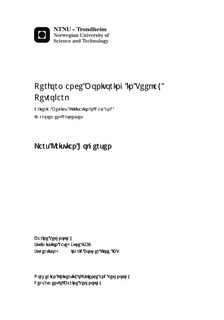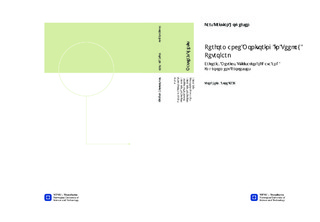| dc.contributor.advisor | Utne, Ingrid Bouwer | nb_NO |
| dc.contributor.author | Holgersen, Lars Kristian | nb_NO |
| dc.date.accessioned | 2014-12-19T12:13:08Z | |
| dc.date.available | 2014-12-19T12:13:08Z | |
| dc.date.created | 2014-09-26 | nb_NO |
| dc.date.issued | 2014 | nb_NO |
| dc.identifier | 750222 | nb_NO |
| dc.identifier | ntnudaim:11215 | nb_NO |
| dc.identifier.uri | http://hdl.handle.net/11250/239196 | |
| dc.description.abstract | The petroleum industry is capital intensive and oil companies are dependent on stable and reliable production. Costs in early project phases must be balanced by revenue in production phases. Improving performance to ensure positive cash flow and competitiveness in the market is imperative. An understanding of past performance is important when the task at hand is improving future performance. These systems have the objective to improve operational performance by facilitating for well-informed, proportionate and timely decisions. This is done through collecting and validating data, developing it to tangible information and through appropriate presentation. The thesis argues that a Performance Monitoring System can provide opportunities for increased production and therefore revenue, through a reduction of production losses and a higher overall facility output.An explorative literature review in Operations management, Systems Engineering, Petroleum- Production, and industry experiences is carried out to create a multidisciplinary and integrated theoretical framework. This is synthesised in criteria for system structure, data management and indicators, and can be used to design and assess Performance Monitoring Systems.The multi-national oil-company Teekay Petrojarl is used as a case where empirical data from two production units illustrate practical execution of performance monitoring in the Norwegian offshore oil and gas industry. An emphasis is given on loss reporting and indicators. The criteria are used to assess the system to reveal strengths and weaknesses, and to serve as a basis for improvement suggestions both for the criteria and for the company.Integrating internal and external stakeholder interests in the Performance Monitoring System shows as important. Developing a policy that formalises roles, responsibilities and processes is needed for the system to function optimally. The company is advised to revise its system according to this. Management of data is a recurring issue in the industry and the case confirms this impression. Data is available and accurate, but an overall plan for the intent and objective of collecting and processing it is missing. The company should standardise reporting formats and tags to facilitate for internal benchmarking. Increasing visibility of loss causes in the presentation-end could increase system quality.The thesis increases knowledge on how Performance Monitoring Systems ideally should be structured and establishes a framework to be used in design an assessment of such systems. It also contributes to Teekay Petrojarl by giving important advise on how to improve their system. Further development of the criteria can provide a more robust framework that can improve the practical execution of performance monitoring in offshore oil and gas production. | nb_NO |
| dc.language | eng | nb_NO |
| dc.publisher | Institutt for marin teknikk | nb_NO |
| dc.title | Performance Monitoring in Teekay Petrojarl: Criteria, Metrics, Utilisation of Data and Improvement Processes | nb_NO |
| dc.type | Master thesis | nb_NO |
| dc.source.pagenumber | 119 | nb_NO |
| dc.contributor.department | Norges teknisk-naturvitenskapelige universitet, Fakultet for ingeniørvitenskap og teknologi, Institutt for marin teknikk | nb_NO |

